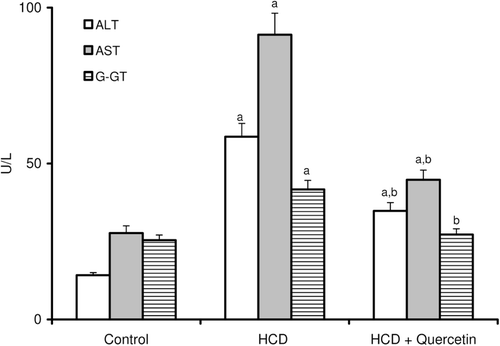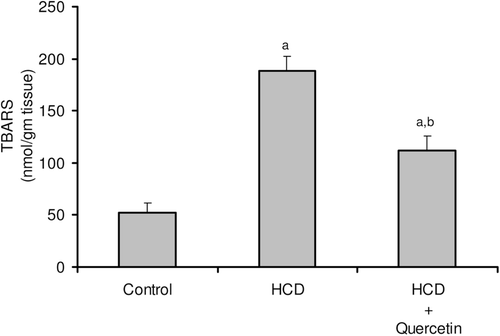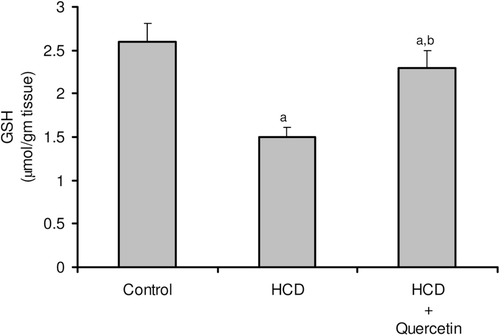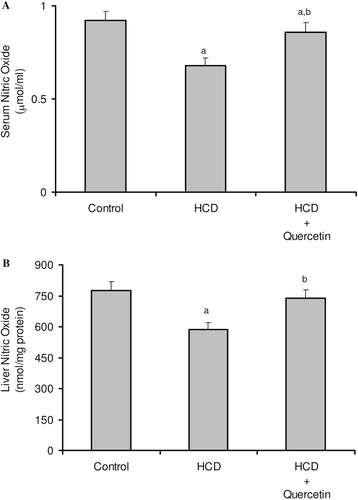Figures & data
Table 1. Effect of quercetin on liver triglycerides and cholesterol in rats fed with HCD.
Table 2. Effect of quercetin on the activities of liver antioxidant enzymes in rats fed with HCD.
Figure 1. Effect of quercetin on serum lipid profile in rats fed with HCD. Data are presented as mean ± SD, n = 10. Multiple comparisons were achieved using one-way ANOVA followed by Tukey–Kramer as post-ANOVA test. a,b: indicate significant change from control and HCD groups, respectively, at p < 0.05.

Figure 2. Effect of quercetin on the activities of serum ALT, AST and G-GT in rats fed with HCD. Data are presented as mean ± SD, n = 10. Multiple comparisons were achieved using one way ANOVA followed by Tukey–Kramer as post-ANOVA test. a,b: indicate significant change from control and HCD groups, respectively, at p < 0.05.

Figure 3. Effect of quercetin on the level of lipid peroxides (TBARS) in the liver of rats fed with HCD. Data are presented as mean ± SD, n = 10. Multiple comparisons were achieved using one way ANOVA followed by Tukey–Kramer as post-ANOVA test. a,b: indicate significant change from control and HCD groups respectively, at p < 0.05.

Figure 4. Effect of quercetin on reduced glutathione (GSH) content in the liver of rats fed with HCD. Data are presented as mean ± SD, n = 10. Multiple comparisons were achieved using one-way ANOVA followed by Tukey–Kramer as post-ANOVA test. a,b: indicate significant change from control and HCD groups, respectively, at p < 0.05.

Figure 5. Effect of quercetin on the level of nitric oxide in serum (A) and liver (B) in rats fed with HCD. Data are presented as mean ± SD, n = 10. Multiple comparisons were achieved using one-way ANOVA followed by Tukey–Kramer as post-ANOVA test. a,b: indicate significant change from control and HCD groups, respectively, at p < 0.05.

